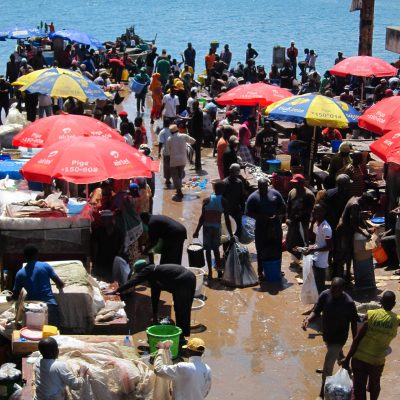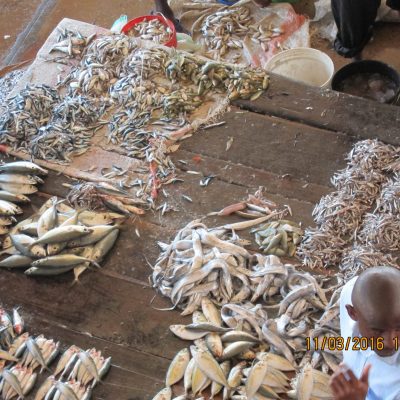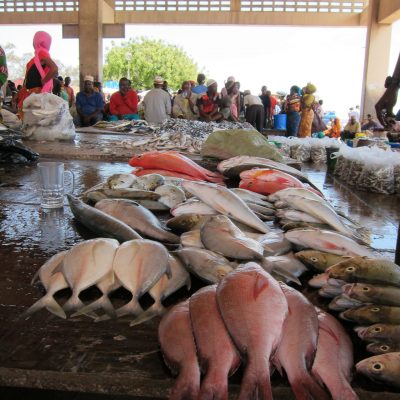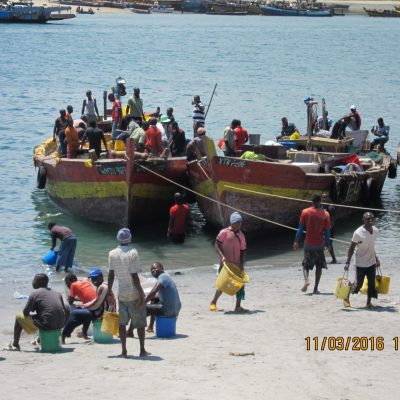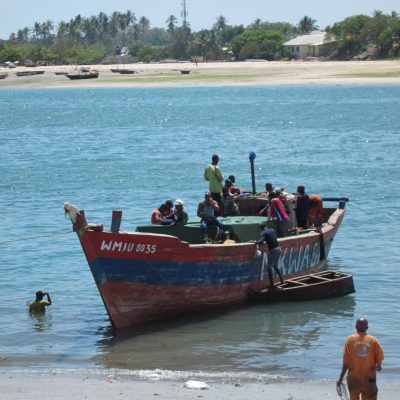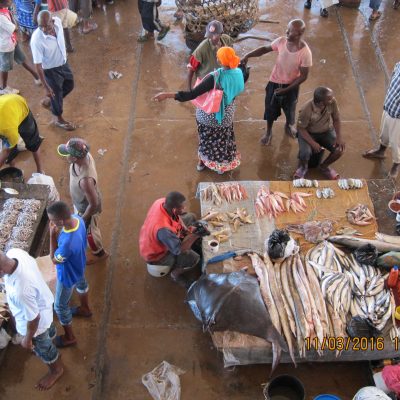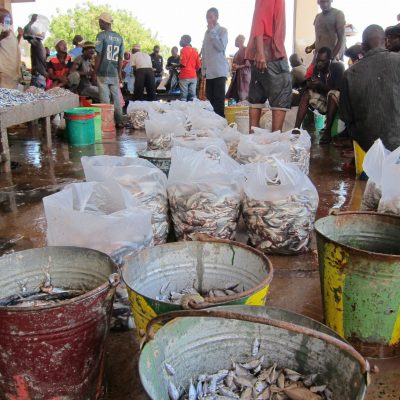Complexities of Fisheries in Tanzania
At 9.00 am we have already arrived late to the bustling Fish Market and the crowds have dissipated a little. I chat with one of the port security guards and he informs me that the market is at its busiest at 6 am. It is one of the largest fish markets in Tanzania. It all starts here on the shoreline of the Kivukoni Fish Market. Up to 200 fishing boats drop anchor and quickly offload their catches to be sold at auction here at the Kivukoni Market. The fish are carried from the boats in colourful buckets and taken to the auction area to be sold. The market is essentially a fish factory that serves a number of regions nationally and other African and international export markets. Several large industrial sized refrigeration units store ice to keep the fish chilled and fresh.
Sardines, kingfish, red snapper, cole, rays, lobsters, octopus, crabs, tuna, are some of the more common species that can be seen at the market, with other more obscure species being landed from time to time. The market is divided into 2 zones, landing, and processing. The fish that are landed here are mainly distributed to national markets in Tanzania and other countries such as Zambia, Zimbabwe, Rwanda, Malawi, Uganda, Botswana Burundi and Congo. Export markets include crab, lobster, octopus, and prawn. Portugal, UK, and China are among the largest of the international export markets. Processed fish for export markets are transported by air and overland to their respective countries.
People gather round the tables of laid out fish and wait for a suitable price to be called. Others throw money beside the fish that they want to buy. Auctioneers sing and shout to entice higher prices and more customers. The energy is intense as some discussions flair into heated arguments about what is deemed to be a fair price. As quickly as disputes flare up, they are resolved just as fast with mutual agreement upon price.
I was beginning to see the complexities of the issue. It wasn’t just about stopping dynamite fishing, Its about so many other perplexing issues and challenges. Dynamite fishing is one piece of the puzzle. There are many different types of illegal fishing techniques that are contributing to the depletion of fish stocks. The use of small mesh nets can wipe out generations of juvenile fish. This has drastic consequences for the reef.
My talk with Lynsay was so interesting. She really helped me to understand the complexities of not just blast fishing but marine conservation. I spoke with one of the Port Managers about the challenges of the fisheries industry in Tanzania and the challenges that fishermen face. Fishing communities face many challenges. Poor quality fishing gear and equipment, lack of fiberglass boats (many still use traditional or hybrid vessels) and lack of engines means that deep-sea fishing cannot take place, and so shallow coastal fishing is common practice. This practice is not sustainable and does not allow for a natural regenerative and replenishment of fish stocks and coral species.
The lack of fiberglass to protect wooden boats puts a demand on timber supplies. Timber is highly valued commodity in East Africa. Tanzania reportedly lost 8.3 million dollars worth of timber to the illegal timber smuggling trade The East African. Regular inspections from government officials ensure that fishermen using destructive fishing methods such as dynamite/blast fishing are prohibited from landing their catches at this port. Blast fish catches are brought directly to buyers mainly in the restaurant and hotel industry and to smaller fish suppliers.
The Port Manager concluded by stating that all stakeholders need to be having a conversation about how to manage Tanzanian fisheries and that stronger links are needed between conservation groups, government departments, and coastal fishing communities.
